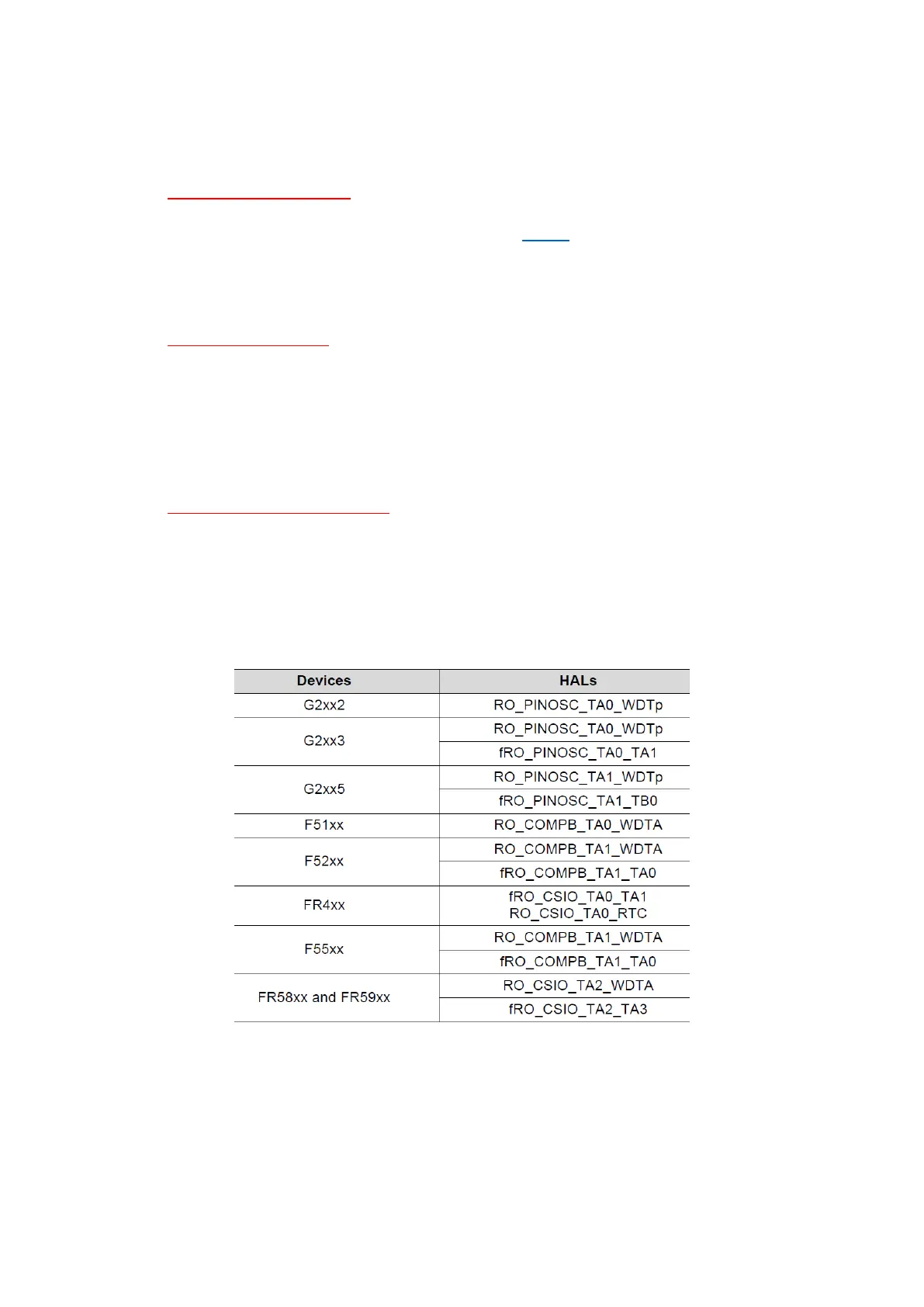389
TI discusses about three methods with which capacitive touch sensing can be achieved. These
methods are as follows:
• Relaxation Oscillator (RO)
This method counts the number of relaxation oscillator cycles within a fixed period called gate
time. Usually for the Value-Line Devices (VLD), the PinOsc feature is used in this method and
the key thing to note here is the fact that no external components like external resistors or
capacitors are needed to implement capacitive touch sensors. It is this method that we will be
observing in this article as our target devices are VLDs.
• Resistor Capacitor (RC)
This method is just the opposite of RO method. In this method, the gate time is variable as it
is the representation of capacitance while the oscillator time period is fixed. The fixed time
base is connected to an internal MSP430 oscillator like the DCO. The variable time base is
connected to a capacitor and resistor network. The time it takes to charge and discharge the
capacitor through the resistor is now the gate time. The RC method can be realized with any
MSP430.
• Fast Relaxation Oscillator (fRO)
This method is similar to the RC method except that the variable gate period is created with a
relaxation oscillator instead of the charge and discharge time.
TI’s capacitive touch library documentation also recommends which hardware combination to use for
a given family of MSP430 microcontroller. Though these are not mandatory, following these
recommended combinations reduces code development time and best performances.
I don’t have TI’s Capacitive Touch Boosterpack and so I had to make the capacitive touch sensors on
my own. I wish I had such a boosterpack because the rudimentary way with which I made the
capacitive sensors quickly is certainly not the best way to follow. I used just bare PCBs, jumper cables
and transparent scotch tape. I highly recommend not to use this technique for professional works.
